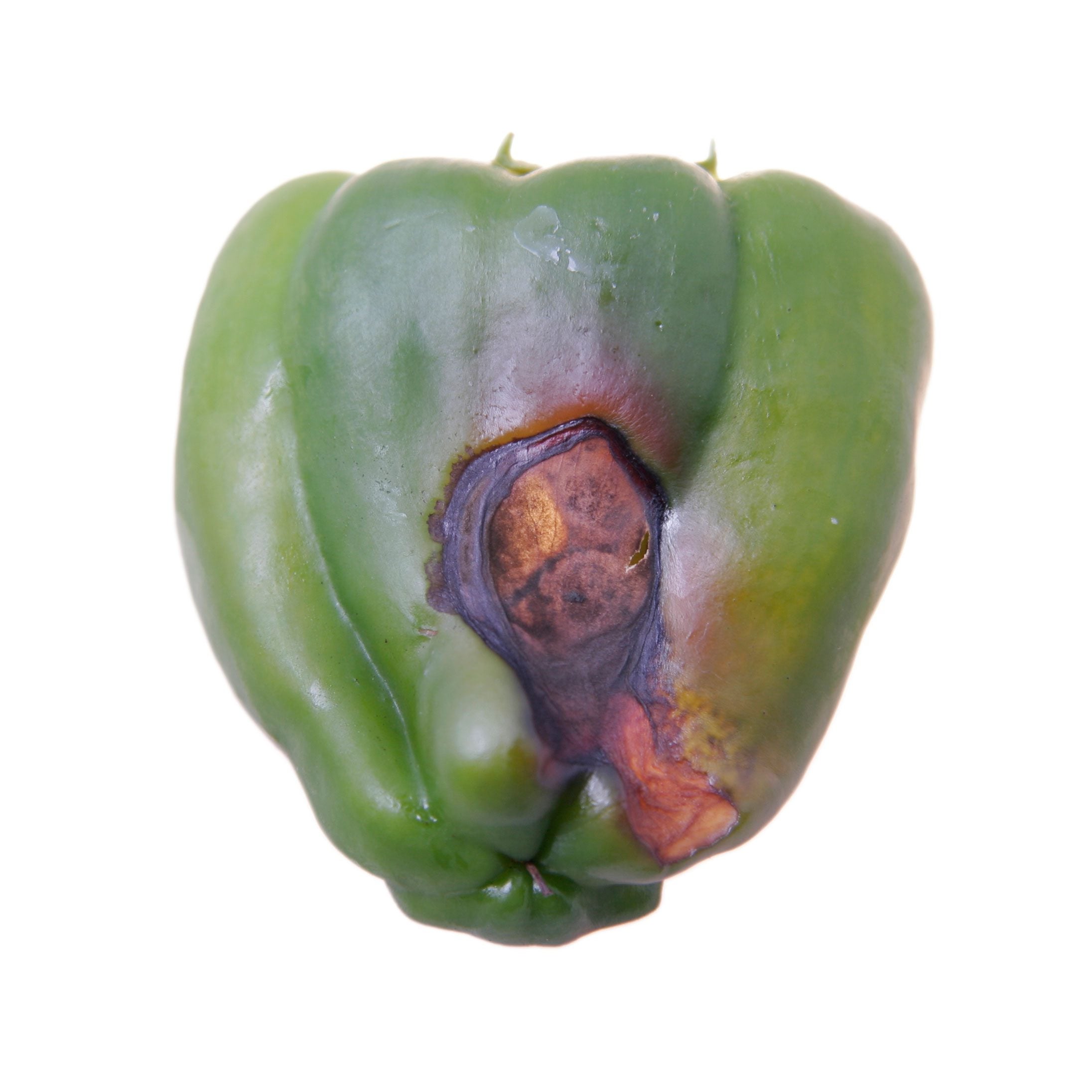Bottom Of Pepper Is Rotting: Fixing Blossom End Rot On Peppers


When a pepper's bottom rots, it can be frustrating to a gardener who has been waiting for several weeks for the peppers to finally ripen. When bottom rot occurs, it is typically caused by pepper blossom end rot. Blossom end rot on peppers is fixable, though.
What is Causing My Peppers to Rot?
Pepper blossom end rot is caused simply by a calcium deficiency in the pepper plant. Calcium is needed by the plant to help form the cell walls of the pepper fruit. If the plant is lacking calcium or if the pepper fruit grows too fast for the plant to supply enough calcium, the bottom of the pepper begins to rot, because the cell walls are literally collapsing. The calcium deficiency in the plant that causes pepper blossom end rot is commonly caused by one of the following:
- A lack of calcium in the soil
- Periods of drought followed by large amounts of water
- Over watering
- Excess nitrogen
- Excess potassium
- Excess sodium
- Excess ammonium
How Do You Stop Blossom End Rot on Peppers?
To help prevent blossom end rot on peppers, make sure that your pepper plants are receiving even and appropriate water. Pepper plants need about 2-3 inches (5-7.5 cm.) of water a week when planted in the ground. To help keep the soil around the peppers evenly moist between watering, use mulch to help keep evaporation down. Another step you can take to avoid pepper blossom end rot is to use a fertilizer that is lower in nitrogen and potassium and is not ammonia based. You can also try selective thinning of developing fruit over the season to help even out the calcium needs of the plant. Additionally, try spraying the affected pepper plants down with a water and Epsom salt mixture. This will help some, but pepper plants have a difficult time absorbing the calcium this way. In the long term, adding eggshells, small amounts of lime, gypsum or bone meal to the soil will help improve the levels of calcium and will help you avoid pepper blossom end rot in the future.
Sign up for the Gardening Know How newsletter today and receive a free copy of our e-book "How to Grow Delicious Tomatoes".

Heather Rhoades founded Gardening Know How in 2007. She holds degrees from Cleveland State University and Northern Kentucky University. She is an avid gardener with a passion for community, and is a recipient of the Master Gardeners of Ohio Lifetime Achievement Award.